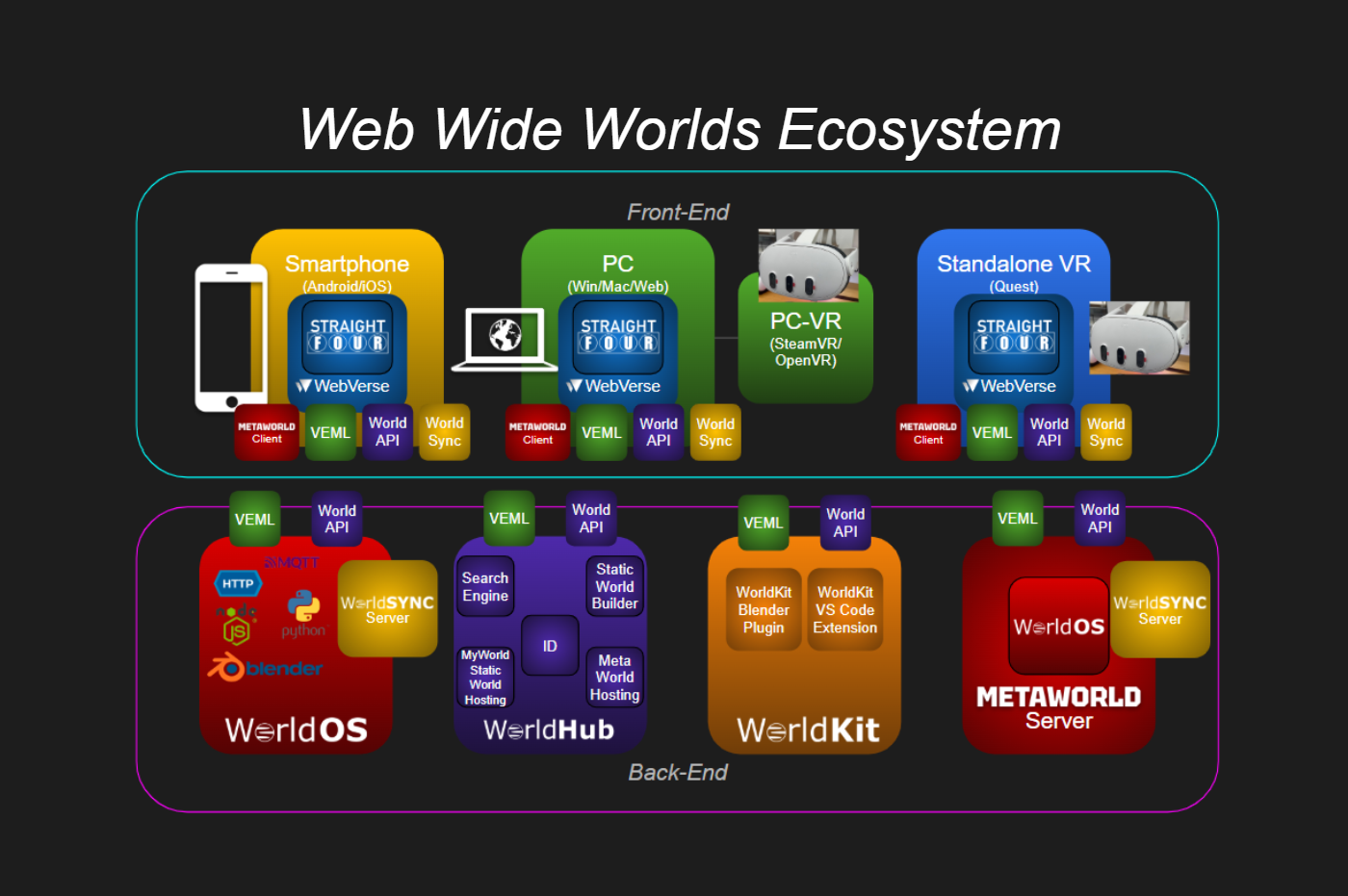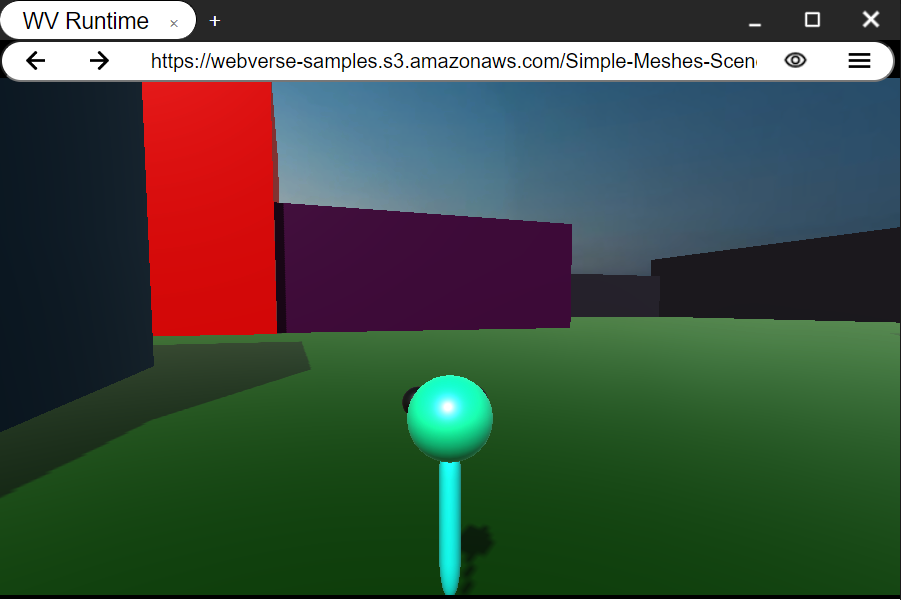Web Wide Worlds
Web Wide Worlds is an open, modular framework for building and exploring interoperable digital worlds. It’s designed to empower creators, developers, and communities with tools that scale from personal sandboxes to planet-sized simulations.
From initial concept to live deployment, Web Wide Worlds streamlines the development process with intuitive tools, powerful APIs, and seamless integration between components.

Technology Stack
An open and modular architecture for building scalable digital worlds
🖥️ Scene Viewer
The rendering interface through which users access virtual environments. World Browsers, such as WebVerse, are software applications at the Scene Viewer layer.
📝 World Definition Layer
Defines the structure and behavior of a world through declarative markup (using VEML) and modular scripting (using JavaScript) components.
🌐 Networking Layer
Enables synchronized presence and interaction across clients using open protocols and flexible multiplayer architectures (using protocols like WorldSync and Mirror Networking).
🔧 Tooling & APIs
Provides extensibility and developer-facing interfaces for rapid prototyping to studio-scale integration. The ecosystem includes WorldOS, a NodeJS-based scaffold for runtime tools. The entire system is designed to be modular and non-prescriptive, allowing developers to choose their preferred tools and integration patterns.
🚀 Publishing Layer
Governs how worlds are distributed and hosted with flexible ownership models and scalable distribution options.
Self-Hosted Deployment
- Full control over infrastructure
- Private simulations and experimental forks
- Custom pipelines and workflows
Third-Party Hosted Services
- Cloud-hosted environments
- Discoverability and versioning
- User management systems
- Persistent and ephemeral experiences
Integrated Tools, Protocols, & Services
Explore the powerful components that make up the Web Wide Worlds ecosystem
WebVerse
World Browser

WebVerse is a World Browser, a front-end app for users to explore digital worlds & environments. It is like a "web browser" for digital worlds: access any world via URL or a click!
Key Features
- Windows, Mac, and Web runtimes
- glTF/VEML/JavaScript world loading
- Powered by the Straight Four World Engine
Use Cases
- Instant preview and remix of user-created worlds
- Metadata-driven behaviors from server-processed VEML
- Lightweight progressive world streaming
- And more!
Getting Started
Go to the WebVerse Website to learn more and install WebVerse. The core development framework for building interactive virtual experiences. WebVerse provides the foundational tools and APIs that power everything else.
Try WebVerse